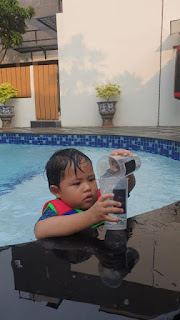This is the article of a Montessori Guide from Council Oak Montessori School. Lila completed her AMI Montessori training in 2009, she has been teaching for close to a decade in the 3-6 year old classroom and is trying her best to create a Montessori environment at home for her 2 year old daughter, one of it is through the use of practical life activities.
Maria Montessori believed children of all ages crave inclusion in their environments. However, they do not always have the tools or skills to do so. With this in mind, she developed the practical life lessons and materials. These greatly mimic the “adult” work children see every day. By observing the children as they worked with practical life materials, Montessori discovered deeper learning taking place.
The Montessori 3-6 year old classroom is filled with practical life work. It is arguably the most important part of the early childhood curriculum, if not the entire Montessori pedagogy. Learning to button, pour, cut, lace, and clean can help a child feel successful, independent, competent and an important part of their community. (There is a wealth of supporting studies, but this is a good start.) Children gain confidence as they become more independent. These activities also play a big role in preparing the child for success in language and mathematics.
As we delve into distance learning, let us not forget that we can provide language and mathematic development in simple and everyday tasks. I might give the class activities like washing silverware, sorting their stuffed animals, or setting the table beautifully for dinner. I might even ask them to organize their sock drawer. While these tasks might feel like busy work or simple care of the community work, a lot more is going on here.
So, what does your child learn while washing silverware, sorting animals, setting the table or a host of many other things that will aid math?
Concentration
By providing simple and short activities to the young child, we provide them with clear moments of concentration and success. A child cannot be expected to sit for a 25-minute lesson without first learning to sit through a 30-second lesson. Through practical life activities, children slowly garner longer moments of concentration.
Logical analysis of movements and sequence
Anytime we learn a new skill, we are learning that things need to be done in the correct order. This can be as simple as learning to open a door, put on a sock or snap a button. To open a door, you have to hold the knob tightly, turn your wrist to turn the knob, pull or push the knob to move the door, step out of the way, and finally release the knob. That is 5 steps! As we learn, the command “Open the door” becomes just one step. We have internalized each of those 5 movements, but for the young child, that same command feels like many steps. If a child skips just one of these 5 steps, the door will not open.
Not only does a child have to learn each step, they also have to learn them in the correct order. Each new skill a child (and really anyone) learns, can benefit from this type of careful analysis. In Montessori, we set up each practical life material to help isolate these movements, and to provide the child with practice they need to be successful in a larger task.
Refinement of movements through repetition
Practical life work, whether in a classroom or at home, allows for lots of repetition. Each simple task offers moments of repetition within the task itself and by repeating it over time. We all have seen a child take a towel that you had just folded, unfold it and fold it over and over again. While this might feel exhausting as you work to finish the task of folding, a child is hard-wired for this type of repetition. A person can sweep every day, can fold napkins every time they come out of the laundry, and wash lettuce before every dinner. These moments of repetition provide the child with ample time to perfect their movements and feel success and satisfaction simply through their practice.
Control of error
This concept means that the material or activity provides a cue that the child performs the activity correctly. The child does not then rely on an adult to tell them if they did the task correctly or not. This not only instills self-confidence and independence but also an innate understanding of right and wrong.
Ease or comfort in failure
Math has right and wrong answers. It is important that our children become comfortable getting things wrong and learning ways to persevere until they get it right. Through practical life work, children are given many opportunities to practice, concentrate, analyze movements, refine their movements and get things wrong before they get it right. And then once they start in more traditional looking math work, children will be ready to hear “hm, that is not the right answer, please try again.











